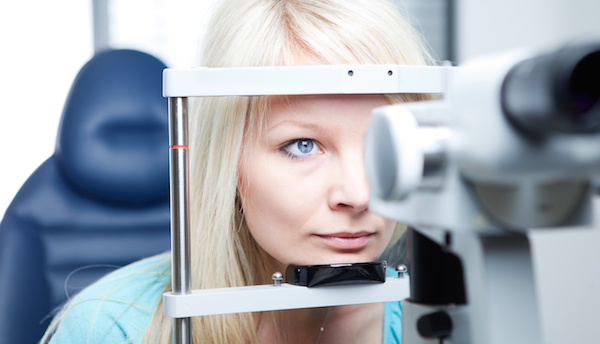
THURSDAY, Nov. 17 (HealthDay News) — People with diabetes are reporting fewer vision problems, a new U.S. government report shows.
Since 1997 the percentage of diabetics reporting vision problems dropped from 26 percent to 18.6 percent, researchers from the Centers for Disease Control and Prevention found.
“Our findings are consistent with other findings,” said lead researcher Nilka Burrows, a CDC epidemiologist. “There is better blood glucose control, blood pressure control and cholesterol control in people with diabetes.”
So, part of the reason for this finding is better management of diabetes, Burrows said, adding that aging had little or no effect on the trend for fewer vision problems.
Dr. Minisha Sood, an endocrinologist at Lenox Hill Hospital in New York City, said that this decline in reported vision problems among diabetics “is encouraging, but there may be a false sense of reassurance here.”
Sood noted that when newly diagnosed diabetics have been living with their condition for five or 10 years, “the percentage of patients with vision impairment might increase dramatically.”
One of the limitations of the study is that the data is self-reported so it isn’t really clear how serious the vision problems are, Burrows noted.
The report was published in the Nov. 18 issue of Morbidity and Mortality Weekly Report, a CDC publication.
Diabetes can lead to vision problems, and even to blindness. It is the leading cause of blindness among adults in the United States, Burrows said.
For the study, Burrows’ team used data from the 1997-2010 National Health Interview Survey. In the survey, people with diabetes were asked if they had any trouble seeing and whether they had seen an eye doctor in the past year.
Between 1997 and 2010, the number of diabetics with vision problems increased from 2.7 million to 3.9 million, the researchers noted.
But the percentage of those reporting vision problems actually decreased, Burrows said.
However, although the percentage of diabetics reporting trouble seeing declined over the period, the percentage of diabetics who had a yearly eye exam remained constant at 63 percent, the researchers found.
People with diabetes should see their doctor to find vision problems early and get early treatment, Burrows said.
Dr. Mark Fromer, an ophthalmologist at Lenox Hill Hospital in New York City, said that “the greatest problems diabetics have is swelling in the retina.”
The condition, called diabetic macular edema, can cause distorted vision, he said. “That occurs because the blood vessels in the eye start to leak fluid into the retina,” he explained.
If diabetes isn’t controlled, another condition called diabetic retinopathy can develop, which can cause blood vessels in the eye to bleed into the eye, Fromer said.
The best way for diabetics to reduce the risk of vision problems is to control their blood sugar, Fromer said.
In addition, diabetics who have no vision problems should see an eye doctor once a year, he said.
“If there is any diabetic retinopathy, the patient should probably come in about every six months,” Fromer said.
More serious retina swelling is treated with laser or the cancer drug Avastin, he said.
Fromer noted that in his practice he is seeing more diabetic patients before they develop vision problems. “General practitioners are recognizing that diabetics need to be seen early,” he said.
“Not only that, we have different diagnostic tests to diagnose the problem earlier,” Fromer said. “If patients are getting treatment earlier, and with better treatment options, the conditions will improve.”
More information
For more on diabetes, visit the U.S. National Library of Medicine.

